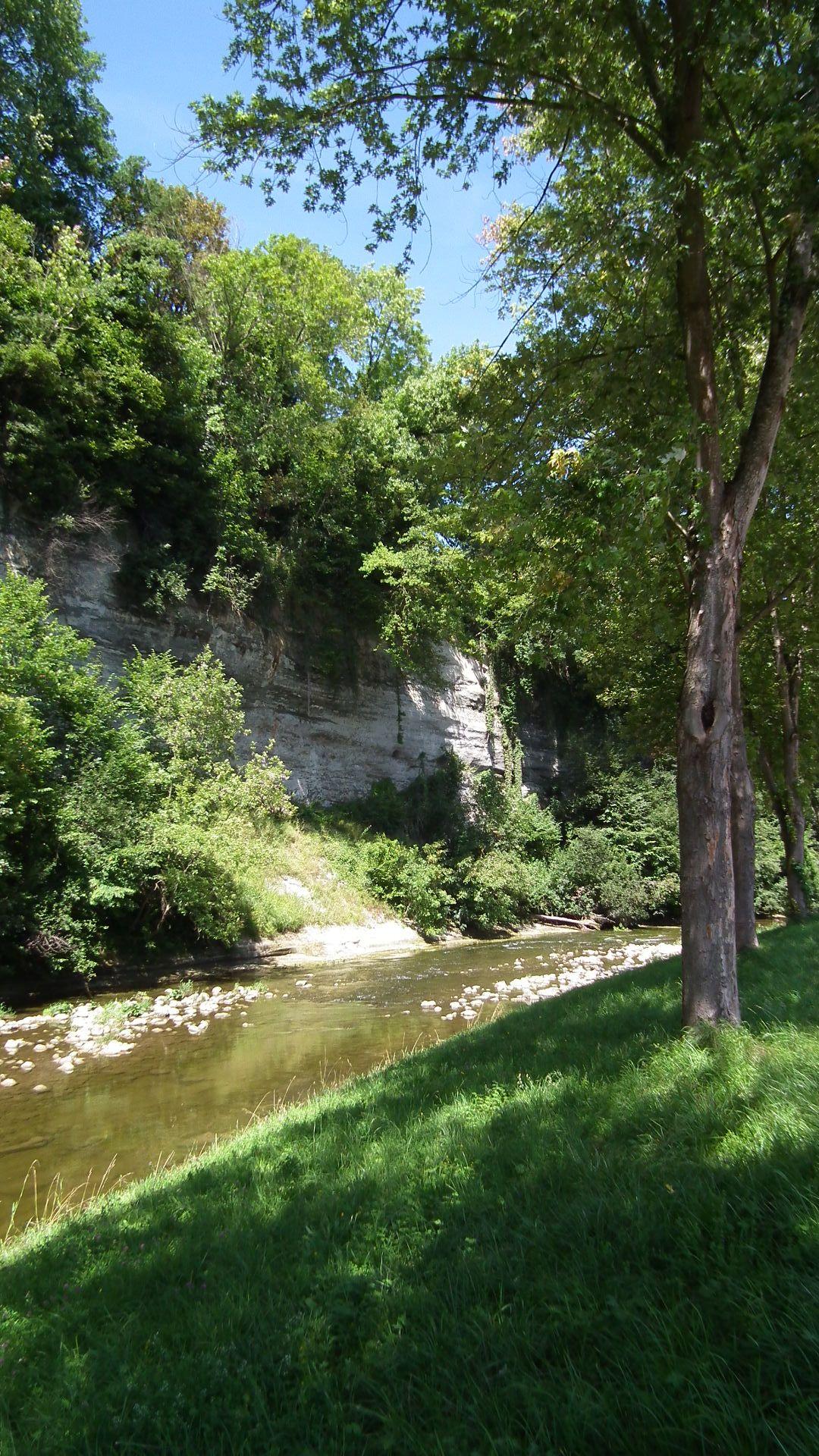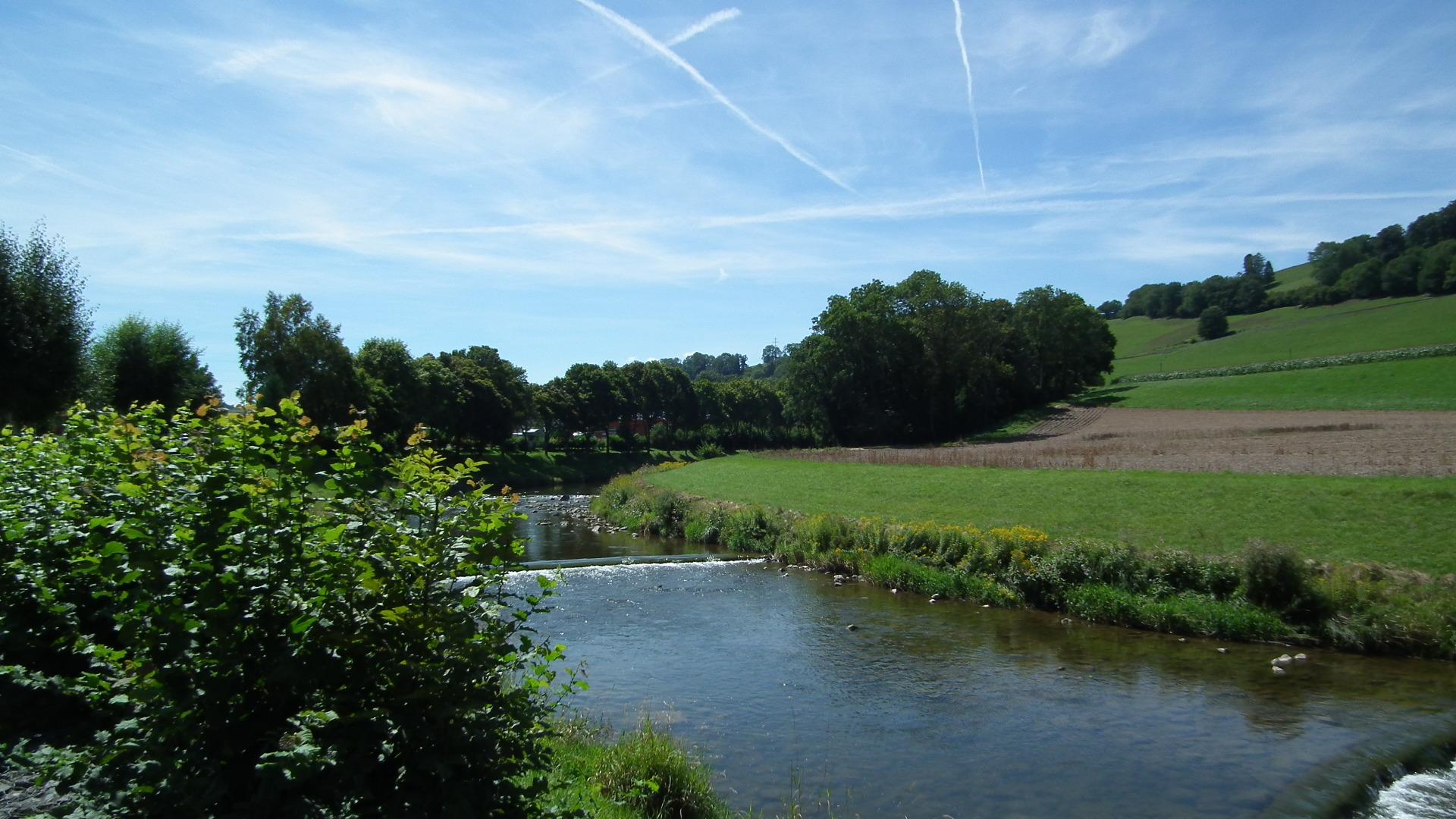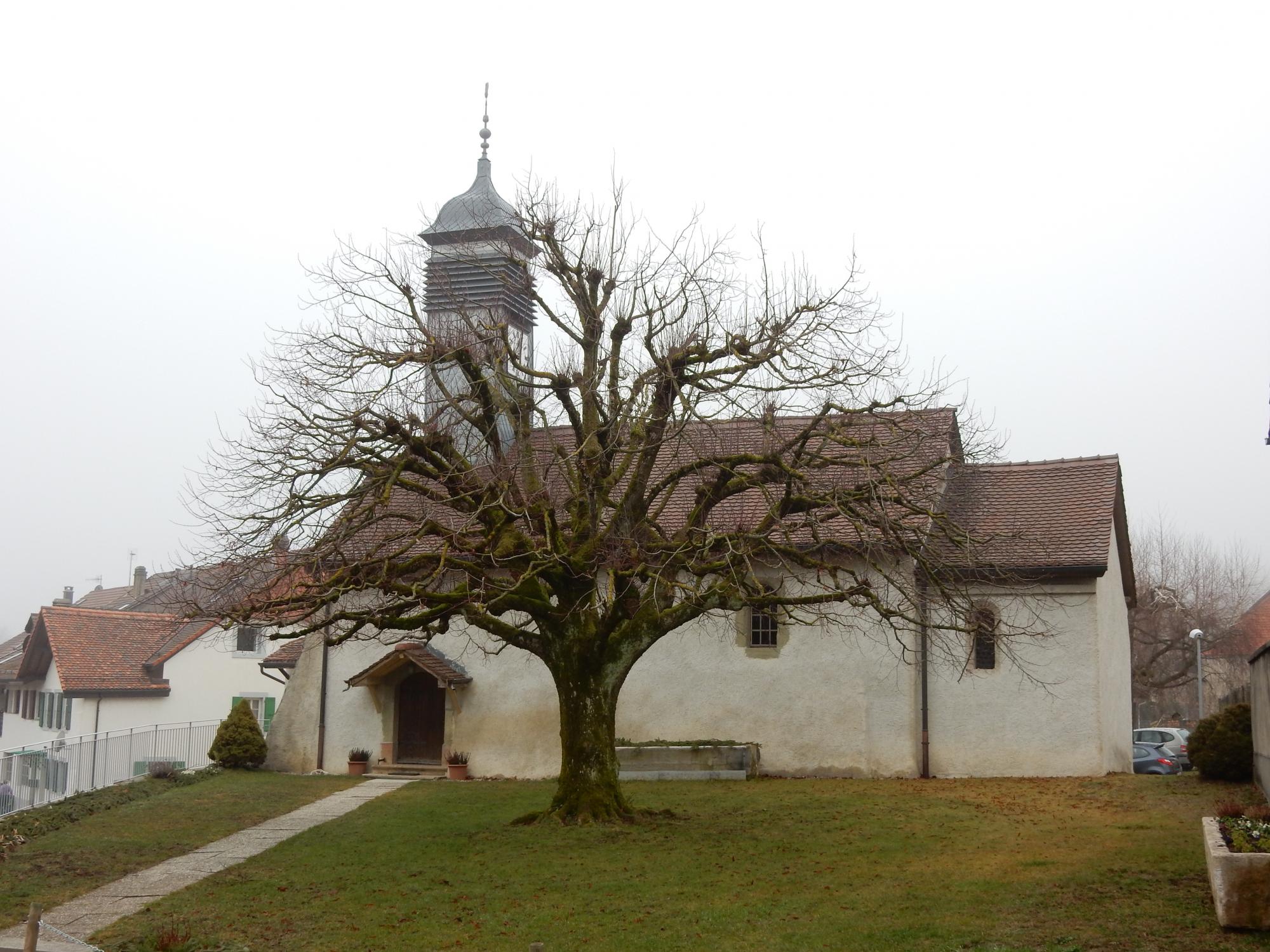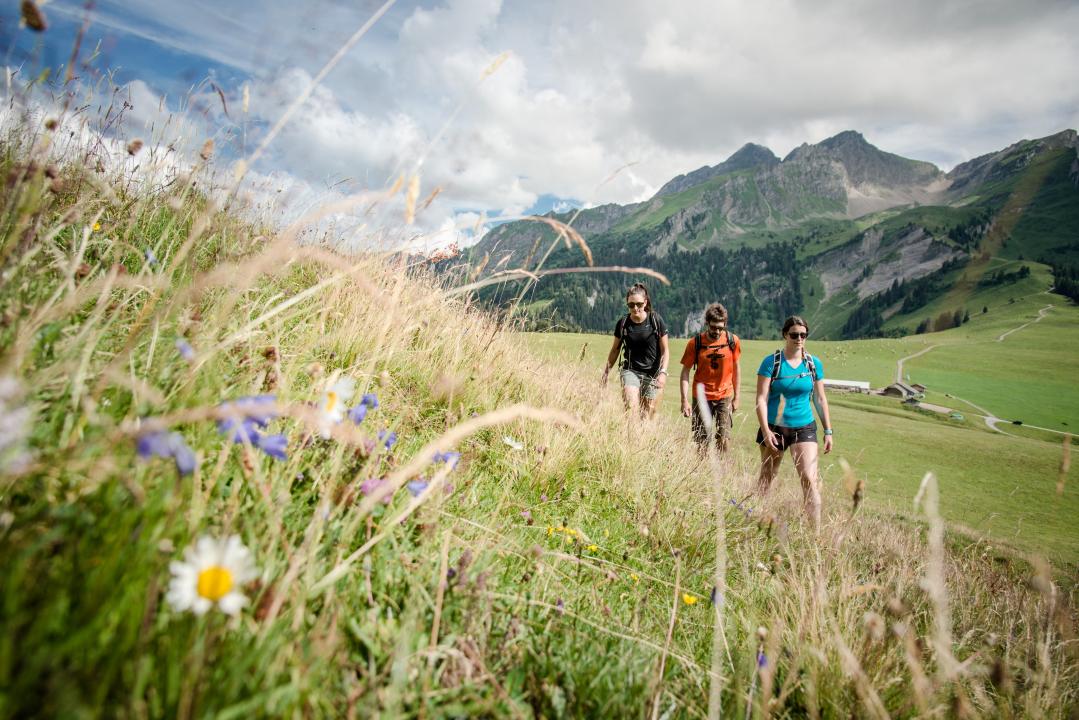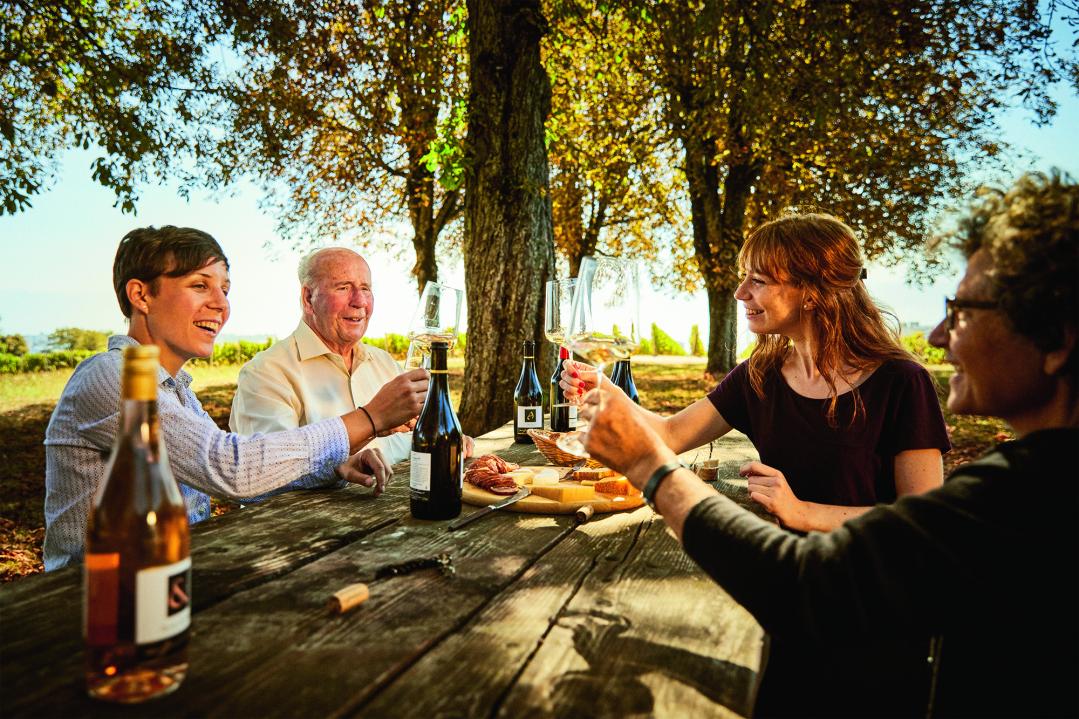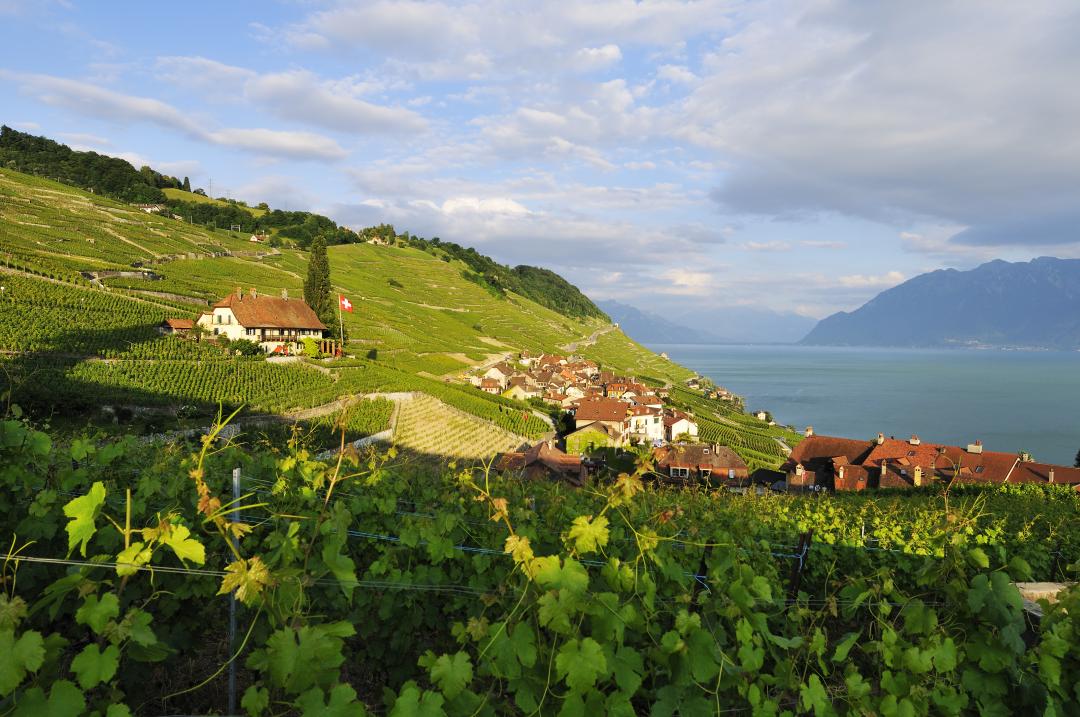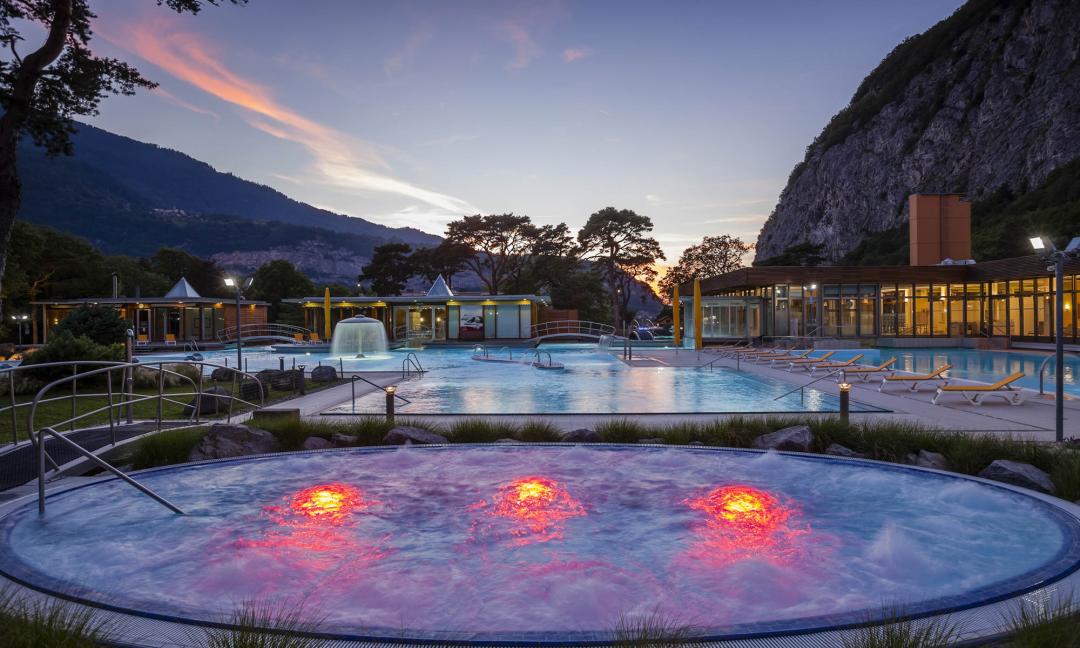This very pretty hike is accessible to the greatest number because it is considered easy. It will allow hikers to discover the richness and diversity of the region's landscapes.
Start at the car park of the Moudon train station and then follow the official signposts and its yellow "walking tourism" signs in the direction of Chavannes-sur-Moudon. Follow the secondary road for a few metres, then take a bridge to cross the Broye.
You will reach a nice picnic area, which will be the starting point for the ascent through the forest. In less than an hour you reach the village of Chavannes-sur-Moudon. Discover the chapel of Notre-Dame dating from the 13th century, and admire the panorama of the Alps and the Jura.
The walk then takes you in the direction of Bressonnaz on the "Chemin de la Vieille Route". Your route runs along the forest, then joins the main road and leads you to the restaurant in this waterside hamlet.
From there, you join the Broye River below and discover on your left the molasse cliffs, typical geological heritage of the region.
This very pretty hike is accessible to the greatest number because it is considered easy. It will allow hikers to discover the richness and diversity of the region's landscapes.
Start at the car park of the Moudon train station and then follow the official signposts and its yellow "walking tourism" signs in the direction of Chavannes-sur-Moudon. Follow the secondary road for a few metres, then take a bridge to cross the Broye.
You will reach a nice picnic area, which will be the starting point for the ascent through the forest. In less than an hour you reach the village of Chavannes-sur-Moudon. Discover the chapel of Notre-Dame dating from the 13th century, and admire the panorama of the Alps and the Jura.
The walk then takes you in the direction of Bressonnaz on the "Chemin de la Vieille Route". Your route runs along the forest, then joins the main road and leads you to the restaurant in this waterside hamlet.
From there, you join the Broye River below and discover on your left the molasse cliffs, typical geological heritage of the region.
